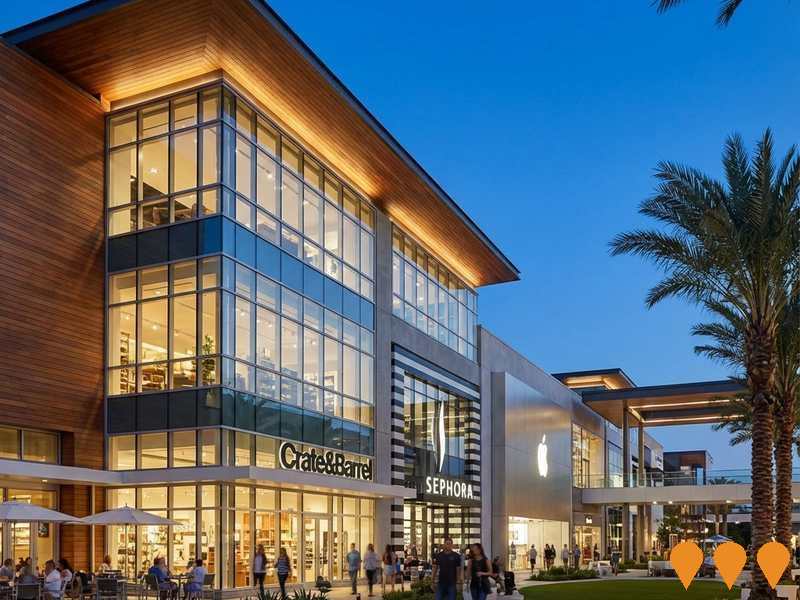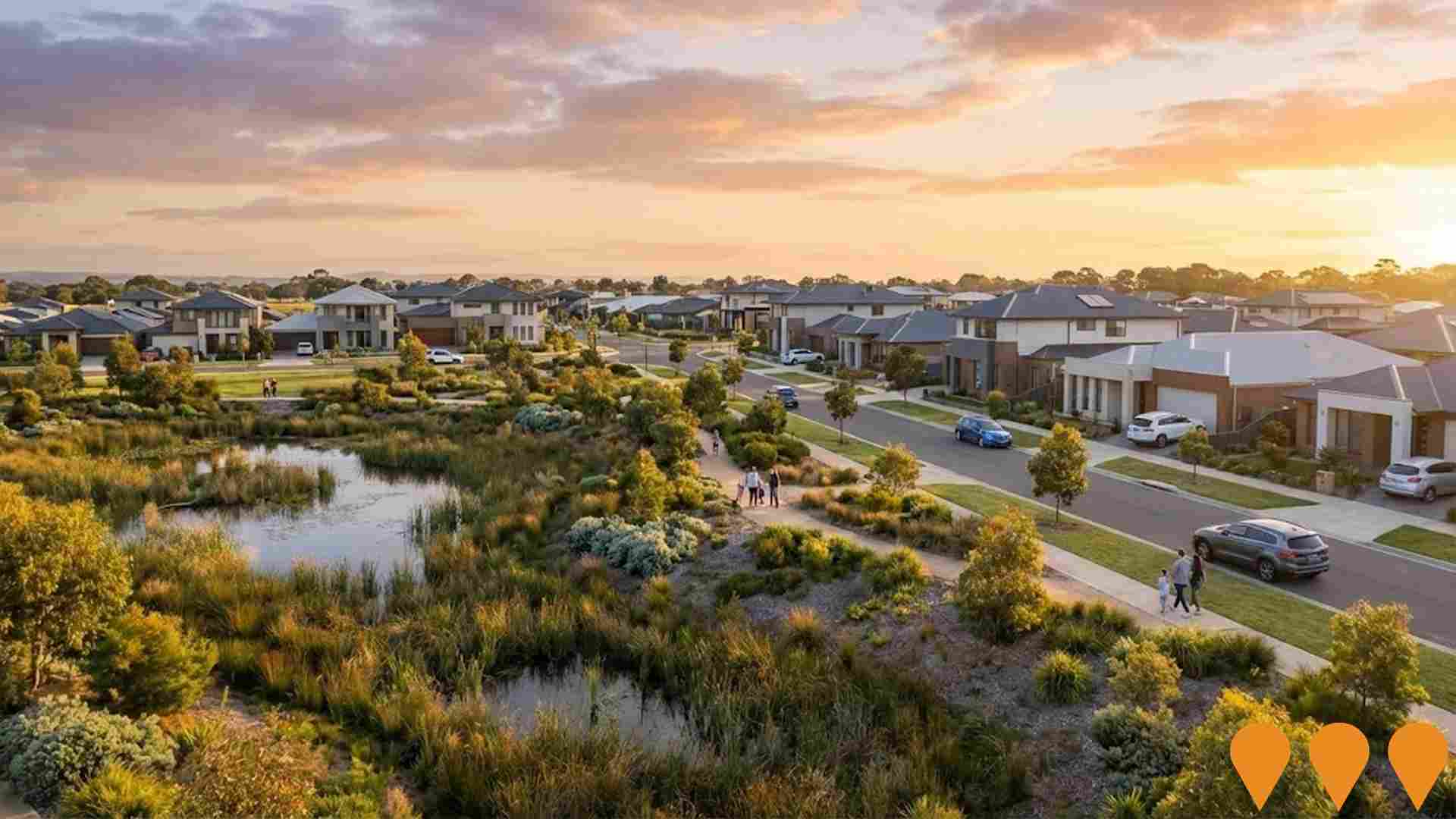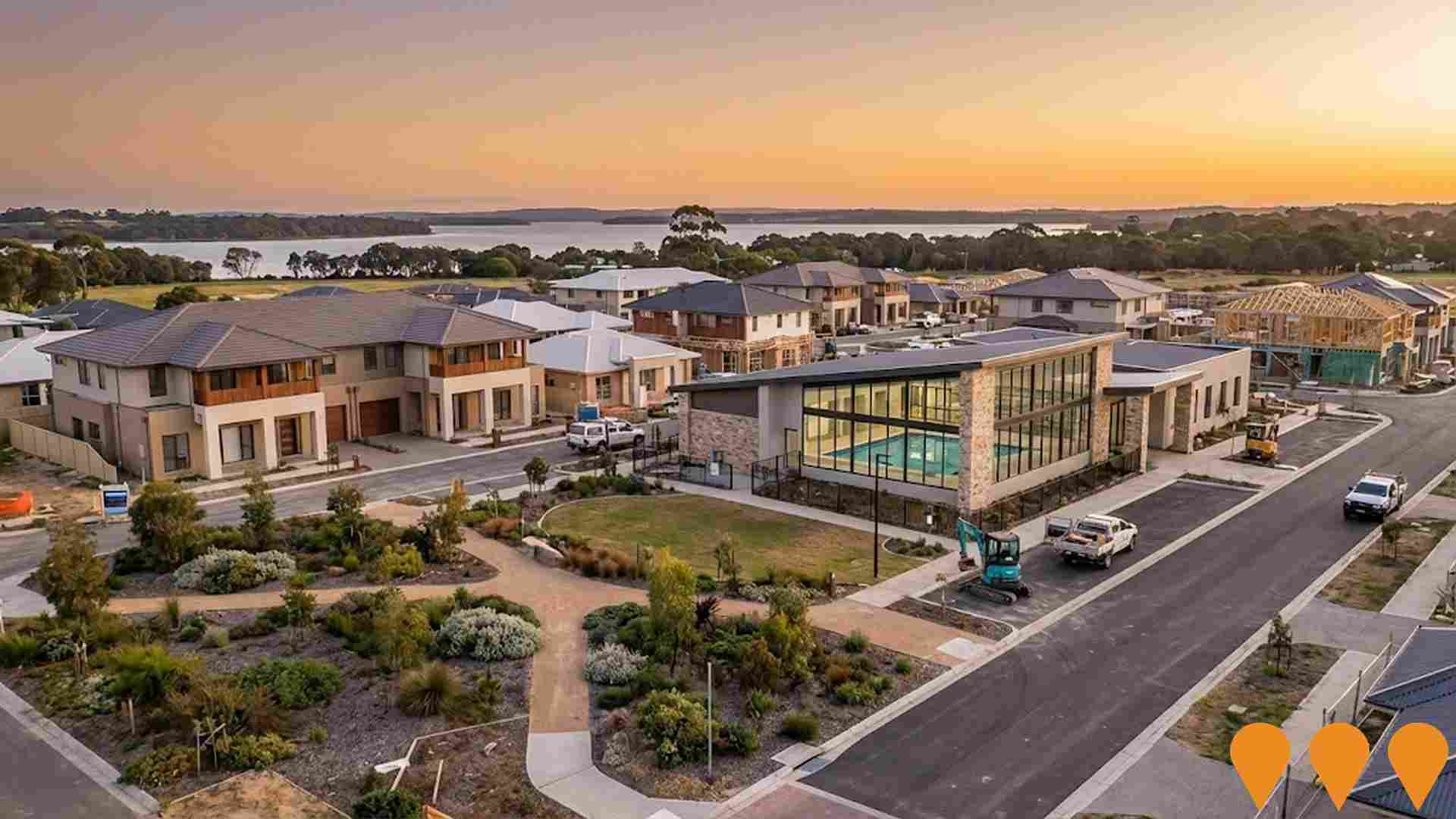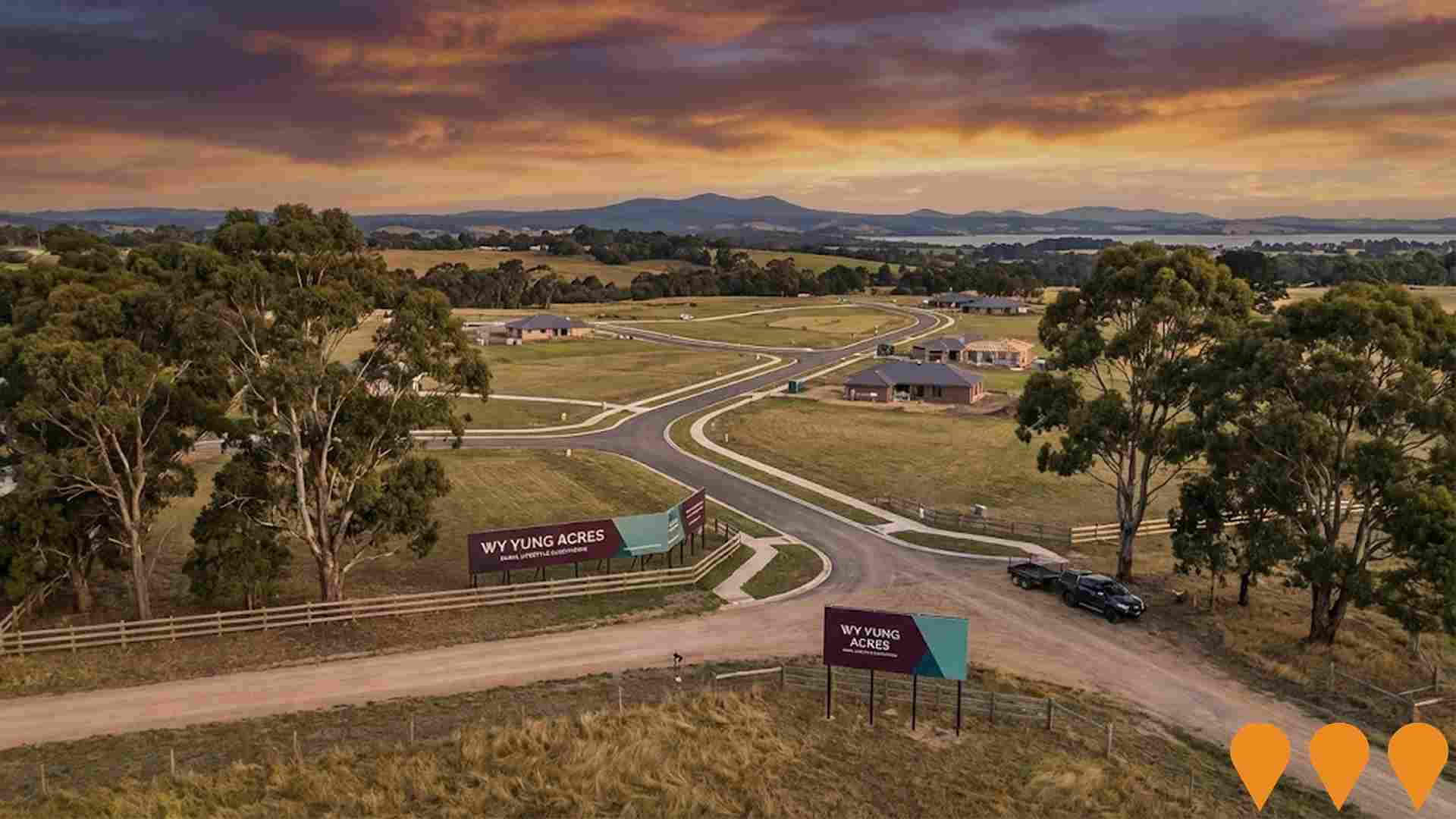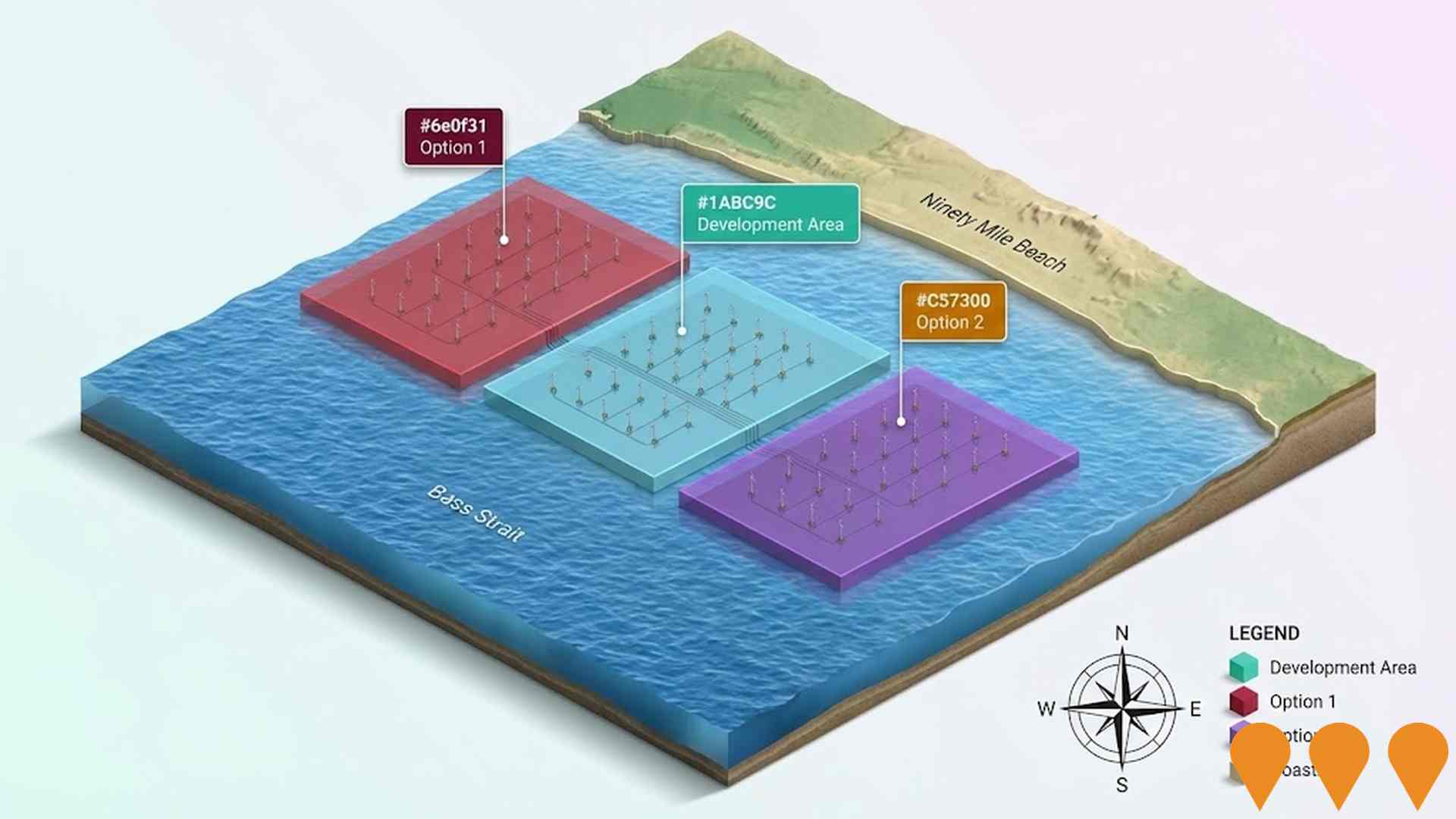Chart Color Schemes
est. as @ -- *
ABS ERP | -- people | --
2021 Census | -- people
Sales Activity
Curious about local property values? Filter the chart to assess the volume and appreciation (including resales) trends and regional comparisons, or scroll to the map below view this information at an individual property level.
Find a Recent Sale
Sales Detail
Population
Bairnsdale lies within the top quartile of areas nationally for population growth performance according to AreaSearch analysis of recent, and medium to long-term trends
Bairnsdale's population, as per AreaSearch's analysis, is approximately 16,437 by November 2025. This figure indicates a rise of 753 individuals, representing a 4.8% increase since the 2021 Census, which recorded a population of 15,684. The change is inferred from the estimated resident population of 16,051 in June 2024 and an additional 649 validated new addresses post-Census date. This results in a density ratio of 106 persons per square kilometer, offering significant space per person and potential room for further development. Bairnsdale's growth rate exceeded the SA3 area's 4.0% since the 2021 Census, positioning it as a growth leader in the region. Interstate migration contributed approximately 54.0% of overall population gains during recent periods.
AreaSearch employs ABS/Geoscience Australia projections for each SA2 area, released in 2024 with a base year of 2022. For areas not covered by this data, AreaSearch uses the VIC State Government's Regional/LGA projections from 2023, adjusted using weighted aggregation methods to SA2 levels. Growth rates by age group are applied across all areas for years 2032 to 2041. Future population trends forecast a significant increase in the top quartile of Australian non-metropolitan areas, with Bairnsdale expected to grow by 6,192 persons by 2041, reflecting a total increase of 33.7% over the 17-year period.
Frequently Asked Questions - Population
Development
AreaSearch assessment of residential approval activity sees Bairnsdale among the top 30% of areas assessed nationwide
Bairnsdale has seen approximately 127 new homes approved annually over the past five financial years, totalling 639 homes. As of FY-26, 40 approvals have been recorded. On average, 0.4 people moved to the area per dwelling built each year between FY-21 and FY-25. The average construction value for new properties is $273,000.
In FY-26, commercial approvals totalled $30.9 million. Bairnsdale maintains similar construction rates per person compared to the Rest of Vic., preserving market equilibrium with surrounding areas. Recent construction comprises 95% standalone homes and 5% townhouses or apartments, reflecting the area's low density nature.
With around 117 people per dwelling approval, Bairnsdale exhibits characteristics of a low-density area. Future projections indicate Bairnsdale adding 5,545 residents by 2041. If current development rates continue, housing supply may not keep pace with population growth, potentially increasing competition among buyers and supporting stronger price growth.
Frequently Asked Questions - Development
Infrastructure
Bairnsdale has limited levels of nearby infrastructure activity, ranking in the 16thth percentile nationally
Changes in local infrastructure significantly impact an area's performance. AreaSearch has identified 11 projects that could affect the region. Notable ones include Quest Bairnsdale, Dan Murphy's Bairnsdale, Princes Highway and McEacharn Street Intersection Upgrade, Wy Yung Acres Rural Lifestyle Subdivision. The following list details those most likely to be relevant.
Professional plan users can use the search below to filter and access additional projects.
INFRASTRUCTURE SEARCH
 Denotes AI-based impression for illustrative purposes only, not to be taken as definitive under any circumstances. Please follow links and conduct other investigations from the project's source for actual imagery. Developers and project owners wishing us to use original imagery please Contact Us and we will do so.
Denotes AI-based impression for illustrative purposes only, not to be taken as definitive under any circumstances. Please follow links and conduct other investigations from the project's source for actual imagery. Developers and project owners wishing us to use original imagery please Contact Us and we will do so.
Frequently Asked Questions - Infrastructure
Paynesville Slip Road Maritime Precinct Upgrade
Upgrade of the maritime precinct including construction of new seawalls, jetties (creating around 40 new berths), a new longer and deeper boat ramp, car parking, boardwalks, pathways, and landscaping to enhance access and support recreational boating, tourism, and local marine businesses. The project has undergone design updates and is being delivered in phases. Construction is expected to be complete by February 2026.
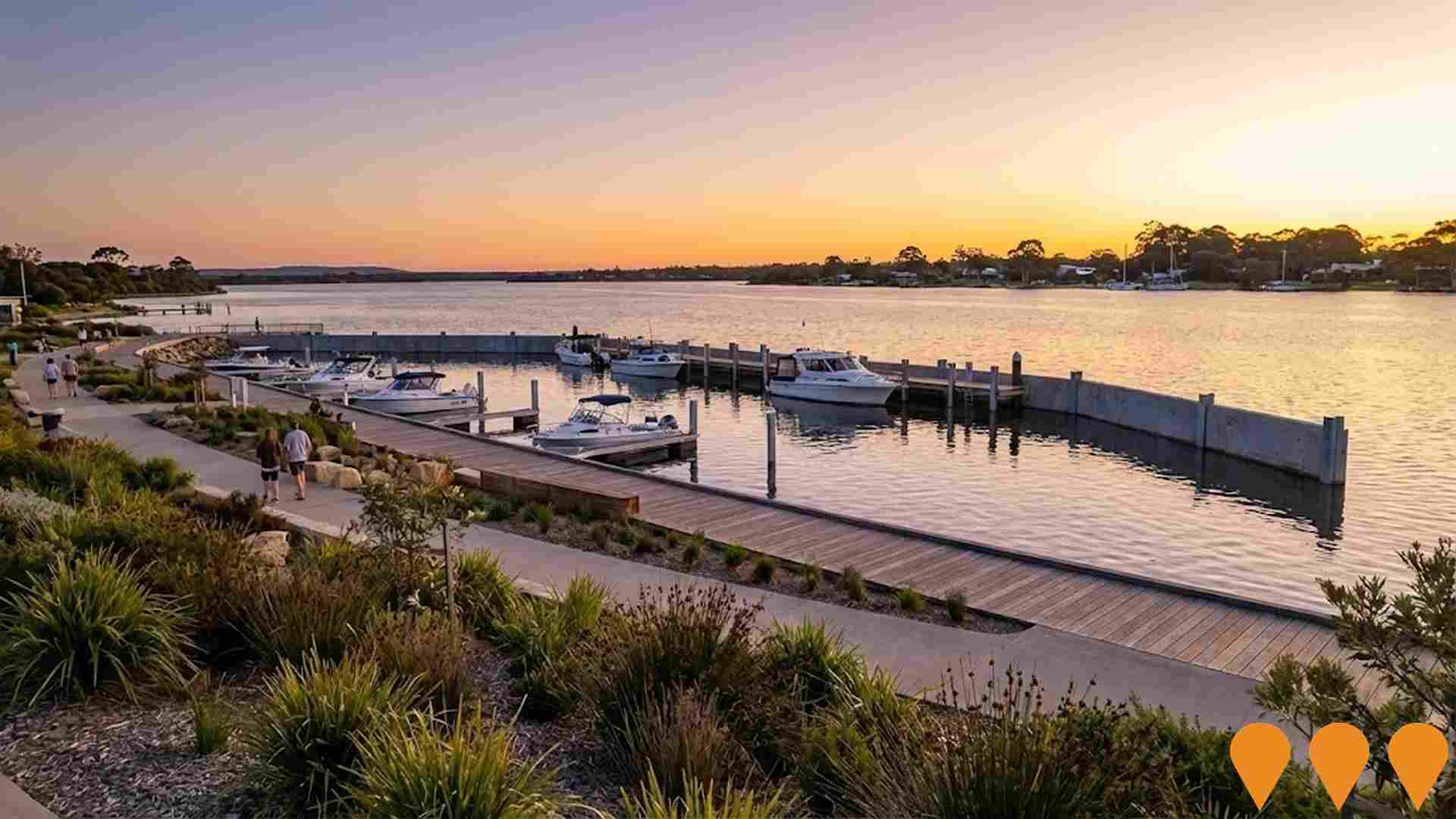
Paynesville Growth Area Structure Plan (C172egip)
Implementation of the Paynesville Growth Area Structure Plan (PGASP) into the East Gippsland Planning Scheme via Amendment C172egip. The plan guides future housing and infrastructure growth in response to population demand. The Independent Planning Panel has provided its report, which Council is now considering before deciding whether to adopt the recommendations and proceed with the amendment's approval, with or without changes.
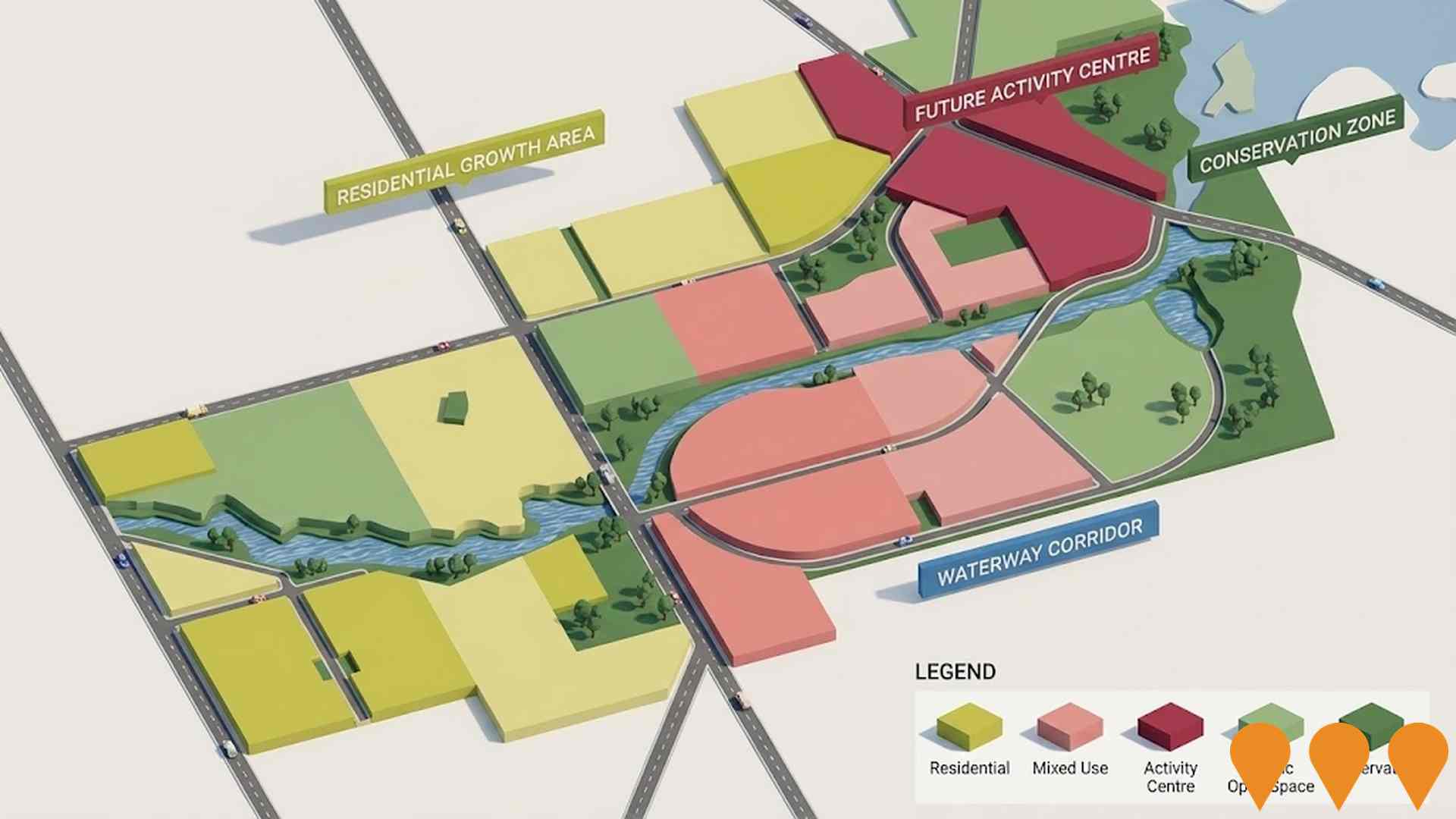
Fingerboards Mineral Sands Project
The Fingerboards Mineral Sands Project is a proposed mineral sands mining operation near Glenaladale in East Gippsland, accessing a significant deposit of rare earth elements and critical minerals vital for renewable energy, computing, defense, and medical science. It employs strip mining with continuous backfill and progressive rehabilitation, aiming to create 300 local jobs and generate $180 million in royalties for the Victorian Government.

Regional Housing Fund Gippsland
Part of Victorian Government's $1 billion Regional Housing Fund delivering over 1,300 new homes across regional Victoria including Gippsland. Mix of social and affordable housing developed through collaboration with councils and communities.
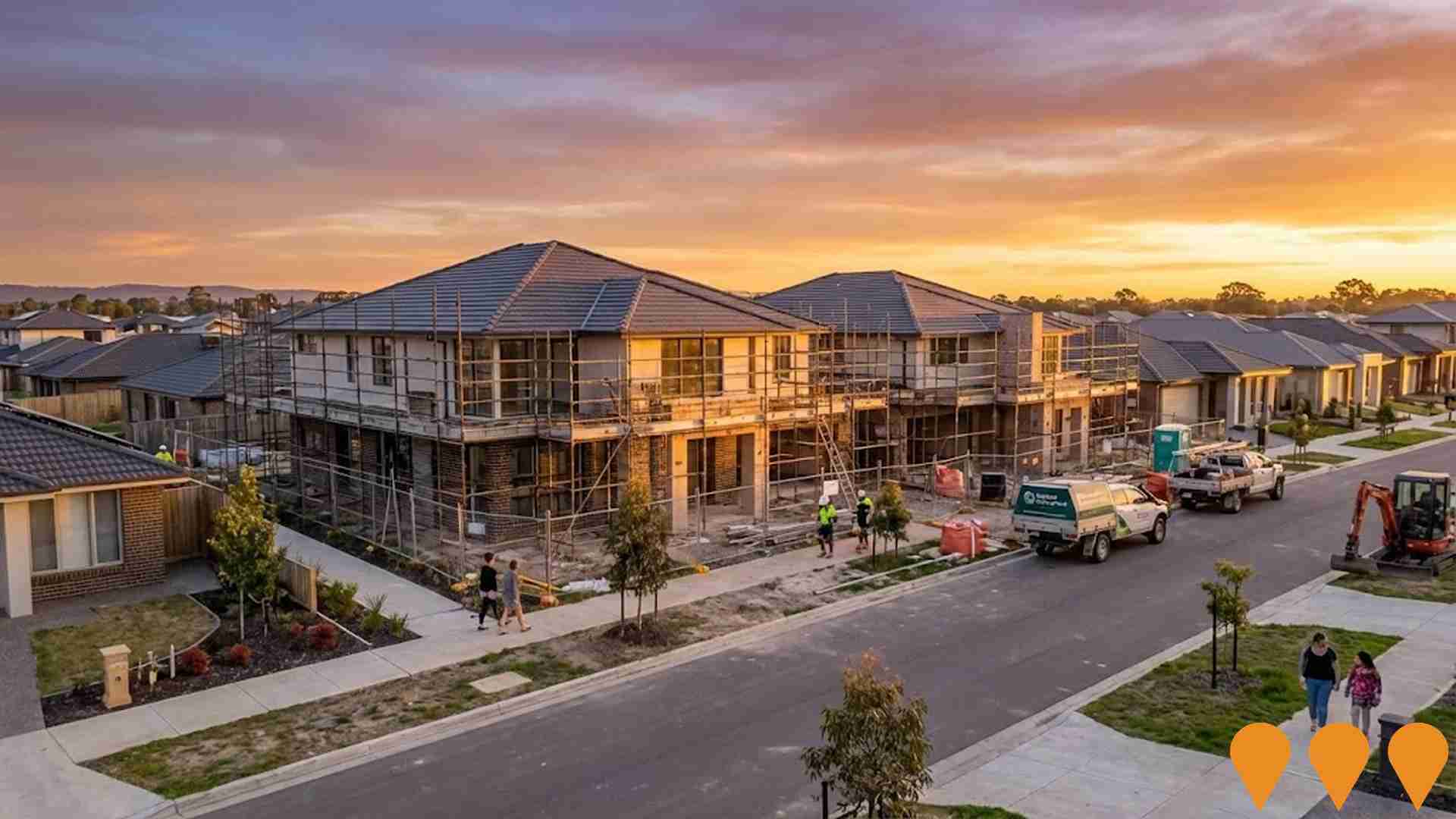
Paynesville Water Recycling Facility Storage Expansion
Construction of a new 300 megalitre (ML) water storage lagoon and associated infrastructure at the Paynesville Water Recycling Facility (WRF) in Forge Creek. This $8 million project will almost triple the facility's storage capacity to 460 ML, enhancing capacity for wet weather management, lowering the risk of environmental impacts from extended wet periods, and supporting population growth in coastal towns south of Bairnsdale (Paynesville, Newlands Arm, Eagle Point, Banksia Peninsula, Raymond Island). The new lagoon is 2 km from the existing WRF, requiring infrastructure for water transfer and irrigation. The project is being undertaken by Max Bright and Sons.

Eagle Point Lifestyle Estate
A premium masterplanned over-50s land lease community by Lincoln Place with plans for 209 architecturally designed two- and three-bedroom single-storey homes, located in Victoria's Gippsland Lakes region. Early works were planned to begin before the end of 2025, with the first residents expected by Christmas 2026. Resort-style amenities will include a clubhouse with cinema, library, and alfresco dining, a wellness centre with a gym and heated pool, a competition-sized bowls green, and a pickleball court. The development model is land lease, with no stamp duty, exit, or council fees for homeowners.
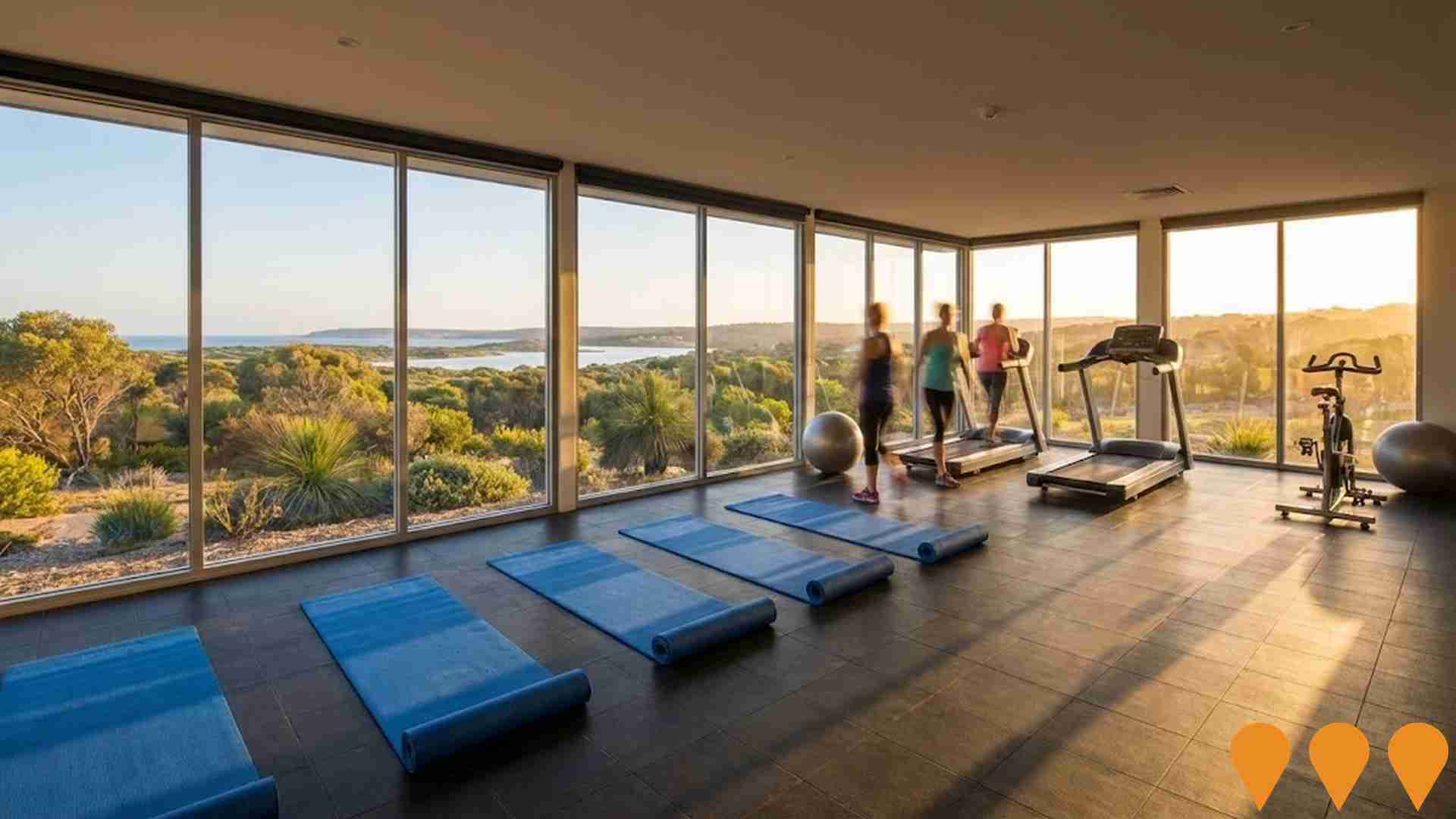
Gippsland Digital Infrastructure Upgrade
Digital infrastructure improvements across Gippsland addressing gaps identified in the Gippsland Digital Plan. Focused on enhancing connectivity for businesses and communities to support economic transition and remote work capabilities.
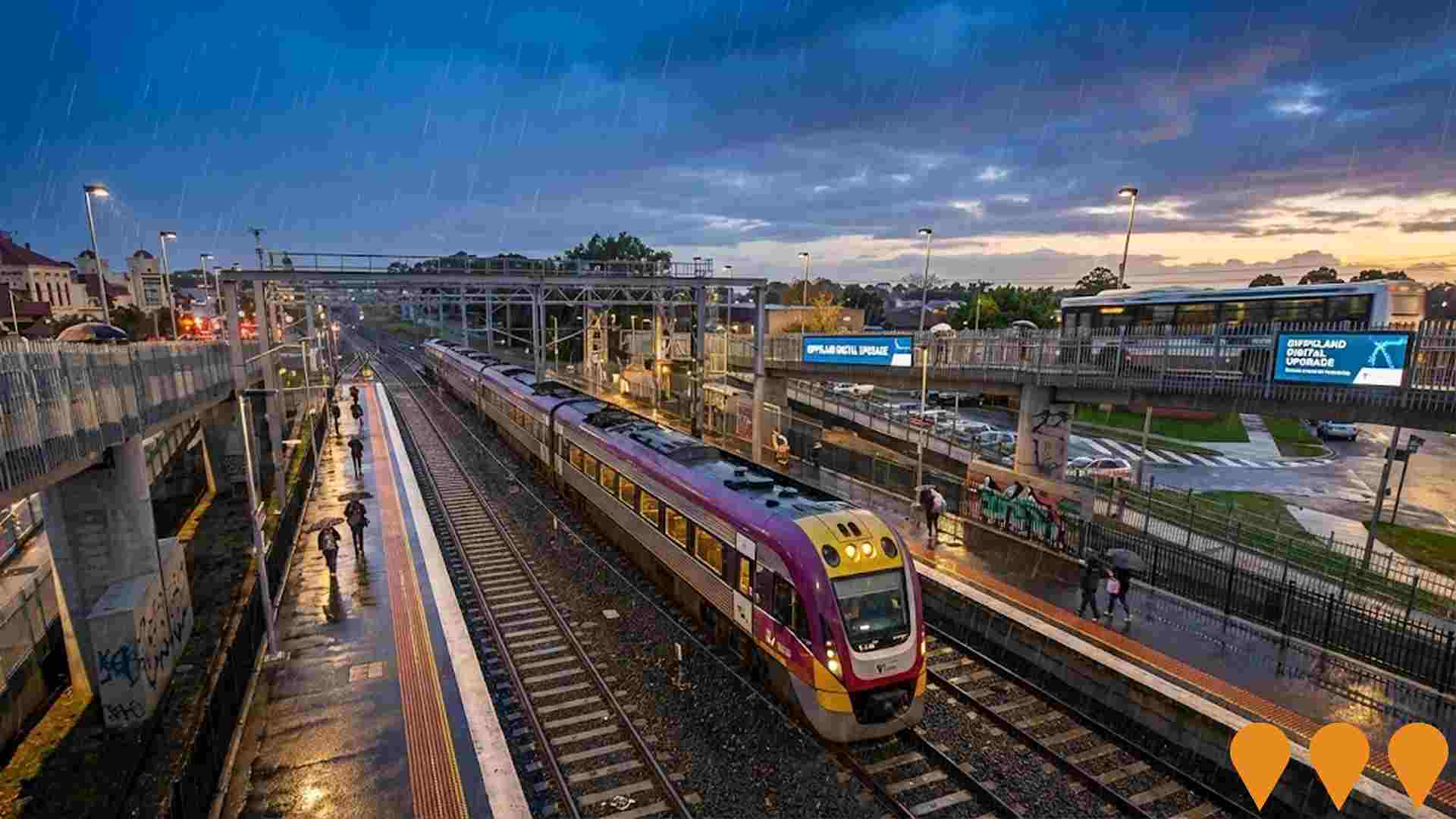
Quest Bairnsdale
A three-storey, 60-room apartment hotel comprising 30 studio rooms (including 2 accessible), 24 one-bedroom rooms (including 2 accessible), and 6 two-bedroom rooms. Construction is underway with bookings open from October 27, 2025, adding much-needed accommodation to the East Gippsland region and contributing to local economic growth and tourism.
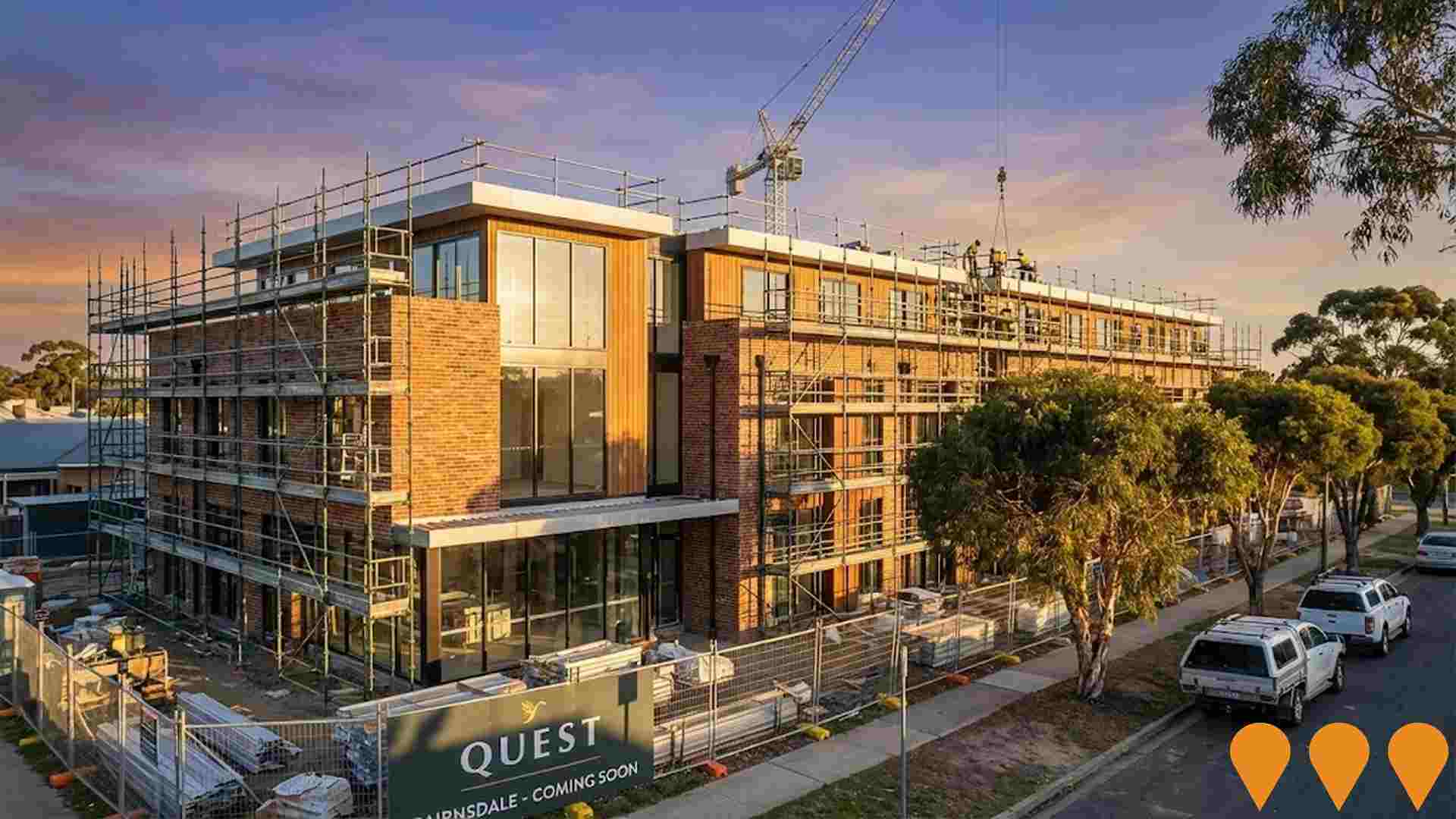
Employment
Employment drivers in Bairnsdale are experiencing difficulties, placing it among the bottom 20% of areas assessed across Australia
Bairnsdale's workforce is balanced across white and blue-collar jobs, with prominent essential services sectors. Its unemployment rate as of June 2025 was 6.1%.
In this month, 6,965 residents were employed while the unemployment rate was 2.3% higher than Rest of Vic.'s rate of 3.8%. Workforce participation in Bairnsdale lagged at 52.2%, compared to Rest of Vic.'s 57.4%. The dominant employment sectors among residents included health care & social assistance, retail trade, and construction. Manufacturing stood out with employment levels at 1.2 times the regional average.
Conversely, agriculture, forestry & fishing employed only 4.3% of local workers, below Rest of Vic.'s 7.5%. The worker-to-resident ratio was 0.6, indicating above-normal local employment opportunities as of Census data. Between June 2024 and June 2025, Bairnsdale's labour force decreased by 0.7% alongside a 1.0% drop in employment, leading to a 0.3 percentage point rise in unemployment. Comparatively, Rest of Vic. saw a 0.9% employment decline, 0.4% labour force decrease, and a 0.4 percentage point increase in unemployment during the same period. Jobs and Skills Australia's national employment forecasts from May 2025 project overall growth of 6.6% over five years and 13.7% over ten years. Applying these projections to Bairnsdale's employment mix suggests local growth of approximately 6.2% over five years and 13.2% over ten years, though these are simple extrapolations for illustrative purposes without considering localized population projections.
Frequently Asked Questions - Employment
Income
The area's income levels rank in the lower 15% nationally based on AreaSearch comparative data
AreaSearch's latest postcode level ATO data for financial year 2022 shows that income in Bairnsdale is below the national average. The median assessed income is $45,514 and the average income stands at $54,083. This contrasts with Rest of Vic.'s figures where the median income is $48,741 and the average income is $60,693. Based on a Wage Price Index growth of 12.16% since financial year 2022, current estimates for Bairnsdale would be approximately $51,049 (median) and $60,659 (average) as of September 2025. According to the 2021 Census, household, family and personal incomes in Bairnsdale all fall between the 13th and 19th percentiles nationally. The earnings profile shows that the $1,500 - 2,999 earnings band captures 28.1% of the community (4,618 individuals), which aligns with regional levels where this cohort represents 30.3%. After housing costs, 85.9% of income remains, ranking at only the 16th percentile nationally.
Frequently Asked Questions - Income
Housing
Bairnsdale is characterized by a predominantly suburban housing profile, with a higher proportion of rental properties than the broader region
Dwelling structure in Bairnsdale, as evaluated at the latest Census held on 9 August 2016, comprised 86.8% houses and 13.1% other dwellings. In comparison, Non-Metro Vic had 90.9% houses and 9.2% other dwellings. Home ownership in Bairnsdale was at 42.2%, with the remaining dwellings either mortgaged (30.0%) or rented (27.9%). The median monthly mortgage repayment was $1,300, aligning with Non-Metro Vic's average. The median weekly rent figure was $280, compared to Non-Metro Vic's $268. Nationally, Bairnsdale's mortgage repayments were significantly lower than the Australian average of $1,863 as of 2017-18 financial year, while rents were substantially below the national figure of $375 in the same period.
Frequently Asked Questions - Housing
Household Composition
Bairnsdale features high concentrations of lone person households, with a higher-than-average median household size
Family households account for 64.8 percent of all households, including 22.8 percent couples with children, 29.1 percent couples without children, and 12.0 percent single parent families. Non-family households constitute the remaining 35.2 percent, with lone person households at 32.3 percent and group households comprising 2.9 percent of the total. The median household size is 2.3 people, larger than the Rest of Vic. average of 2.2.
Frequently Asked Questions - Households
Local Schools & Education
Educational outcomes in Bairnsdale fall within the lower quartile nationally, indicating opportunities for improvement in qualification attainment
The area's university qualification rate is 16.3%, significantly lower than Victoria's average of 33.4%. Bachelor degrees are the most common at 11.1%, followed by postgraduate qualifications (2.7%) and graduate diplomas (2.5%). Vocational credentials are prevalent, with 39.7% of residents aged 15+ holding them, including advanced diplomas (11.3%) and certificates (28.4%). Educational participation is high at 26.8%, comprising primary education (9.9%), secondary education (7.7%), and tertiary education (2.2%).
Twelve schools serve 3,744 students, with typical Australian school conditions (ICSEA: 965) and balanced educational opportunities. The area has five primary, three secondary, and four K-12 schools, functioning as an education hub with 22.8 school places per 100 residents, significantly above the regional average of 12.2.
Frequently Asked Questions - Education
Schools Detail
Nearby Services & Amenities
Transport
Transport servicing is low compared to other areas nationally based on assessment of service frequency, route connectivity and accessibility
Bairnsdale has 47 active public transport stops offering a mix of train and bus services. These are served by 23 individual routes that collectively facilitate 363 weekly passenger trips. The accessibility of the transport system is rated as good, with residents typically located 334 meters from the nearest stop.
On average, there are 51 trips per day across all routes, equating to approximately 7 weekly trips per stop.
Frequently Asked Questions - Transport
Transport Stops Detail
Health
Health performance in Bairnsdale is well below average with prevalence of common health conditions notable across both younger and older age cohorts
Health data indicates significant health challenges in Bairnsdale, with high prevalence of common conditions across both younger and older age groups. Private health cover rate is notably low at approximately 47% (around 7,725 people), compared to the national average of 55.3%.
The most prevalent medical conditions are arthritis (10.7%) and mental health issues (9.9%). Approximately 61.6% of residents report no medical ailments, slightly higher than the Rest of Vic.'s 60.1%. Bairnsdale has a lower proportion of seniors aged 65 and over at 25.4% (around 4,173 people), compared to Rest of Vic.'s 30.5%. Senior health outcomes present challenges but perform better than the general population in health metrics.
Frequently Asked Questions - Health
Cultural Diversity
Bairnsdale is considerably less culturally diverse than average when assessed alongside AreaSearch's national rankings for language and cultural background related metrics
Bairnsdale, as per data from the 2016 Census, had a cultural diversity index of below average. Its population was predominantly Australian-born citizens with English spoken primarily at home: 89.0%, 87.8%, and 94.3% respectively. Christianity was the dominant religion in Bairnsdale, comprising 46.2% of its residents.
Notably, the 'Other' religious group was slightly overrepresented compared to the rest of Victoria, at 0.7%. In terms of ancestry, English (32.4%) and Australian (31.1%) were the top two groups, followed by Scottish (8.2%). Some ethnic groups showed notable differences in representation: Dutch (1.6% vs regional 1.9%), Australian Aboriginal (3.5% vs 2.5%), and Italian (3.1% vs 2.5%) were relatively more prominent in Bairnsdale compared to the broader region.
Frequently Asked Questions - Diversity
Age
Bairnsdale hosts an older demographic, ranking in the top quartile nationwide
Bairnsdale's median age is 44 years, similar to Rest of Vic.'s 43 and higher than the national average of 38 years. Compared to Rest of Vic., Bairnsdale has a higher percentage of 75-84 year-olds (9.5%) but fewer 55-64 year-olds (11.9%). Between the 2021 Census and now, the 15-24 age group has increased from 10.4% to 11.6%, while the 65-74 cohort has decreased from 13.5% to 12.5%. By 2041, Bairnsdale's age composition is expected to change significantly. The 25-34 group is projected to grow by 72%, adding 1,417 people and reaching a total of 3,400 from the current 1,982. The 75-84 group is expected to grow modestly by 5%, with an increase of 74 residents.
